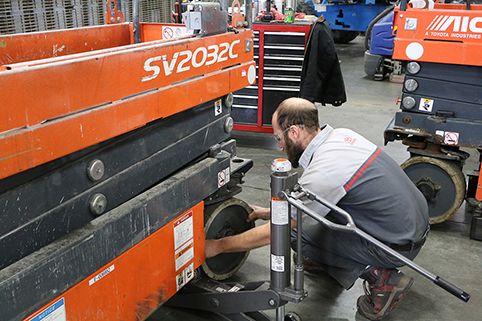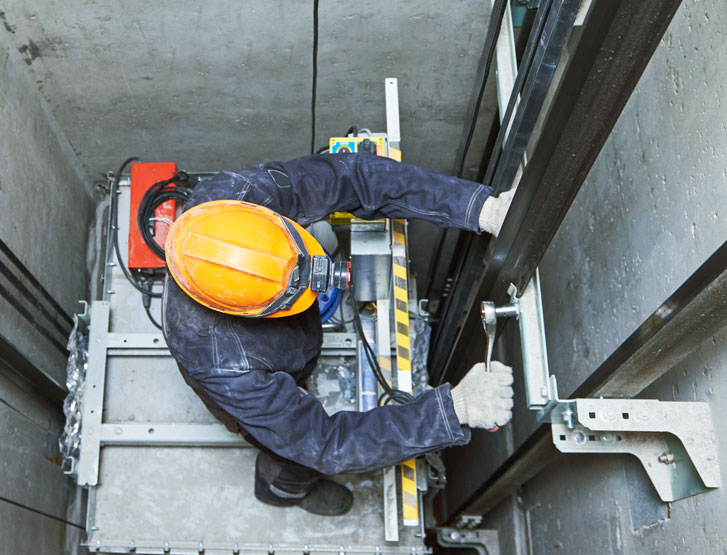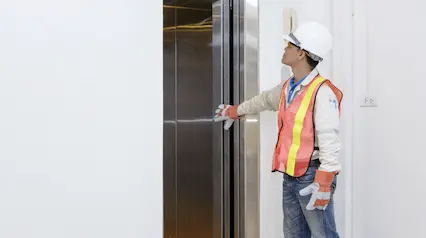24/7 Lift Maintenance Repair: Prompt and Reliable Service
Wiki Article
Pro Tips for Maintaining Your Lift in Top Problem: A Thorough Review
Making certain the optimal functioning of a lift system is vital for a effective and secure operation in different settings, from commercial warehouses to business structures. By adhering to a structured upkeep routine and preemptively attending to prospective issues, lift proprietors can alleviate pricey downtime and safety and security dangers.
Significance of Normal Upkeep
Regular upkeep of your lift is vital to guarantee its optimal performance and durability. By sticking to a routine maintenance schedule, you can identify and deal with potential problems prior to they intensify into pricey repairs or unforeseen downtime. Regular upkeep tasks such as lubricating relocating parts, examining for deterioration, and inspecting hydraulic systems can assist avoid breakdowns and guarantee safe procedure.Neglecting routine upkeep not just jeopardizes the efficiency of your lift but also postures security threats to users and residential or commercial property. Components that are not properly kept might fail all of a sudden, causing crashes or damage to the lift itself. In addition, resolving problems early with maintenance can extend the life-span of your lift and minimize the chance of major break downs.
In enhancement to improving safety and security and efficiency, regular upkeep can also conserve you cash over time. By investing in precautionary upkeep procedures, you can avoid expensive repair work or substitutes that might develop from disregarding the maintenance of your lift. Overall, prioritizing regular maintenance is essential for making best use of the capability and longevity of your lift system.
Leading Parts to Examine

Additionally, pay close focus to the lift's safety functions, such as emergency situation quit buttons, safety and security sensing units, and interlocking systems, to ensure they are working correctly. Regularly inspect the lift shaft for debris or obstructions that might hamper the movement of the lift automobile.
Positive Troubleshooting Techniques
When faced with possible lift system issues, taking on positive troubleshooting methods can dramatically enhance functional effectiveness and avoid expensive downtime. One of the essential positive troubleshooting techniques is to consistently evaluate and check lift efficiency information. By tracking metrics such as lift speed, electric motor temperature, and power usage, upkeep groups can recognize very early indicators of prospective concerns and take corrective actions prior to they rise. Performing regular visual examinations of crucial parts, such as cable televisions, sheaves, and safety mechanisms, can likewise help in detecting damage or imbalances that can result in malfunctions. In addition, carrying out a preventive maintenance schedule that consists of lubrication of moving components, testing of emergency brakes, and calibration of sensors can proactively resolve typical lift system problems.Furthermore, purchasing training programs for maintenance team on repairing strategies details to the lift version mounted can empower them to identify and settle problems promptly. By remaining ahead of prospective troubles with proactive troubleshooting, lift operators can make sure a smoother and more dependable operation while decreasing the threat of unanticipated failures.
Essential Lubrication Practices
Applying proper lubrication techniques is vital for making sure the smooth operation and long life of lift systems. Normal lubrication helps reduce friction between moving parts, avoiding my sources damage that can lead to pricey repair work and downtime. When it involves raise upkeep, following a strict lubrication schedule is crucial.Selecting the ideal lubricant is the initial step in effective upkeep. Various parts of the lift system might need specific kinds of lubricating substances, such as grease or oil. Speak with the supplier's guidelines to establish the appropriate lubricating substances for each component.

Routinely evaluating the problem of lubricated parts is additionally vital. Seek signs of too much wear, contamination, or insufficient lubrication. Resolve any problems immediately to avoid further damages and ensure the ongoing smooth procedure of your lift system. By focusing on appropriate lubrication practices, you can prolong the life expectancy of your lift and maximize its performance.
Security Measures for Lift Operators
In order to keep a secure working environment and promote functional efficiency, lift drivers must carefully stick to recommended safety and security protocols, alongside focusing on important lubrication techniques for ideal lift efficiency. Safety and security measures for lift operators are critical to avoid accidents and make certain the smooth performance of the lift system.Furthermore, lift drivers should focus on individual safety equipment (PPE) such as safety helmets, gloves, and security harnesses when working at elevations or taking care of heavy loads. Clear communication amongst operators, upkeep specialists, and various other personnel is click here for info essential to stop misconceptions that might cause accidents. Last but not least, operators should stay attentive, focused, and avoid disturbances while running the lift to make certain the safety of themselves and others around.
Verdict
In conclusion, keeping a lift in leading problem is crucial for making sure safety and security and performance in operations. Normal upkeep, thorough examinations of vital components, proactive troubleshooting, correct lubrication methods, and adherence to precaution are crucial for extending the life-span of the lift and preventing accidents. By following these standards, lift operators can guarantee the ongoing functionality and safety of their devices.By adhering to an organized upkeep regimen and preemptively resolving prospective concerns, lift proprietors can reduce pricey downtime and safety dangers. On a regular basis inspect the lift shaft for particles or obstructions that could hamper the motion of the lift automobile.In order to keep a risk-free functioning setting and support functional efficiency, lift operators should rigorously stick to suggested security protocols, alongside focusing on vital lubrication methods for optimum lift efficiency. Security procedures for lift drivers are critical to prevent crashes and make certain the smooth functioning of site here the lift system. Routine maintenance, extensive inspections of essential elements, proactive troubleshooting, correct lubrication practices, and adherence to security measures are crucial for lengthening the lifespan of the lift and protecting against accidents.
Report this wiki page